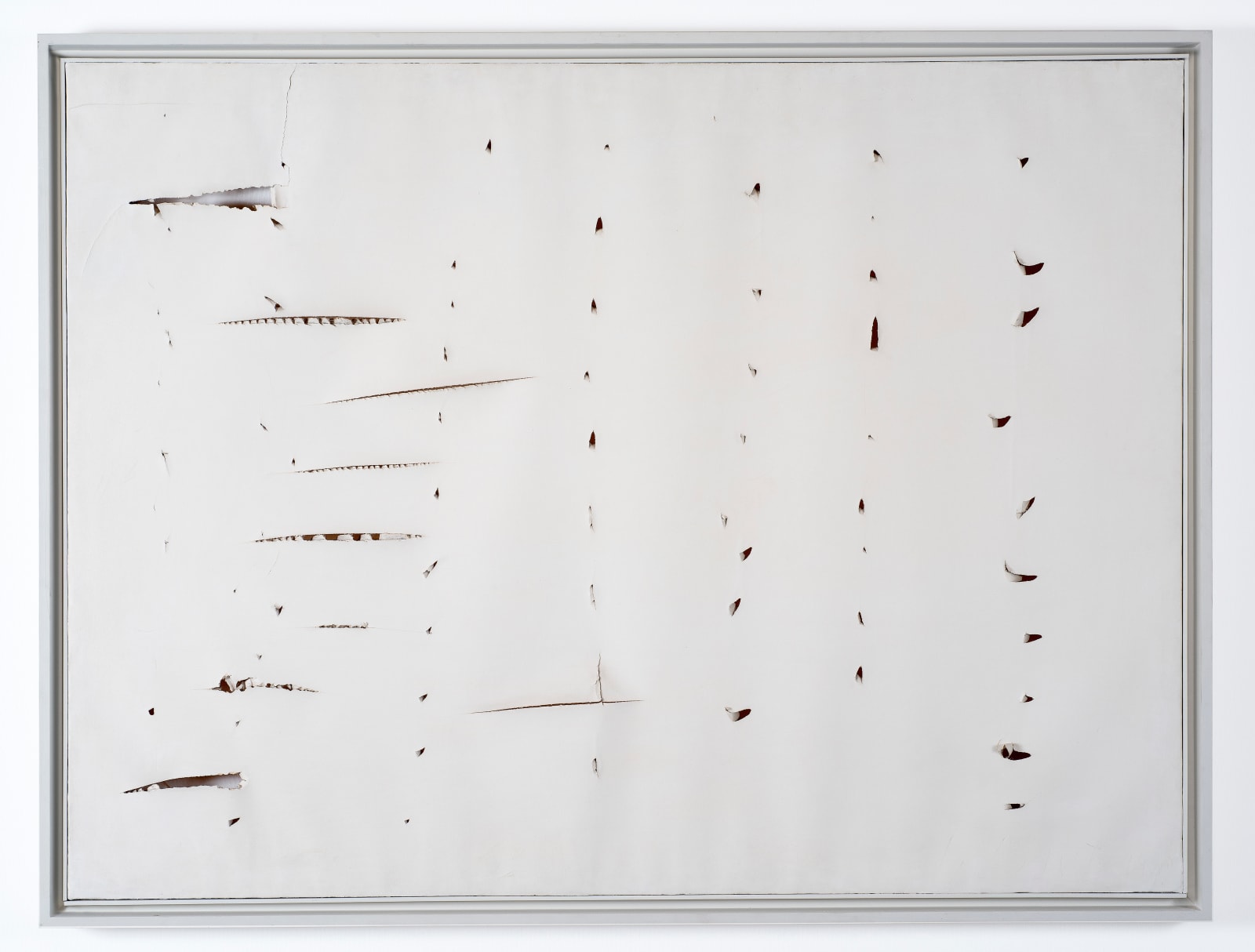



Lucio Fontana Argentine-Italian, 1899-1968
Further images
Fontana first began puncturing the surfaces of paper, canvas and ceramics in the late 1940s, marking the beginning of his 'Spatial Concept' series. These spatial investigations were important innovations which effectively cut between the space occupied by the viewer, through the surface of the canvas, to the space that lies beyond.
Concetto Spaziale (1957-58) is of particular significance, as it predates Fontana's true Tagli (cut) paintings by over a year. Although Fontana is widely believed to have started his Tagli series in 1959, the first Tagli were made in the late summer and early autumn of 1958. This large-scale work is among the first investigations by Fontana in his Tagli series, and one can clearly observe Fontana's interest in developing the hole as his signature gesture, here combining 'buchi' (holes) and cuts in a pattern marking the movement of the artist's hand. Fontana's initial 'slashes' were cut in tight sequence, and comprised small, often diagonal incisions, composed in groups. These first incisions in paper canvas are rough and energetic, as one can see in the ragged tears in the present work. Later, in 1959, these tentative cuts evolved into the more definitive, single cuts.
This work was recently included in the exhibitions ZERO: Countdown to the Future (Sakıp Sabancı Museum, Istanbul) and Lucio Fontana (Hayward Gallery, London).



